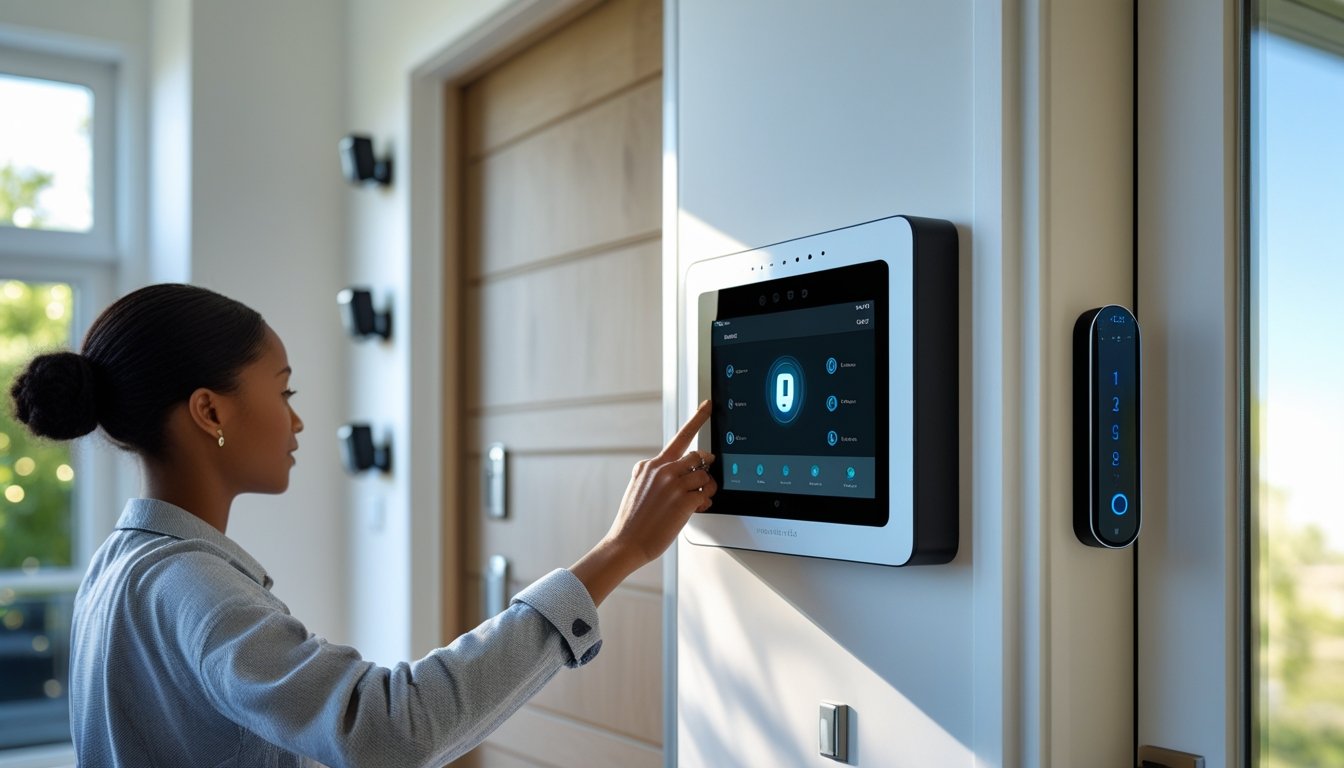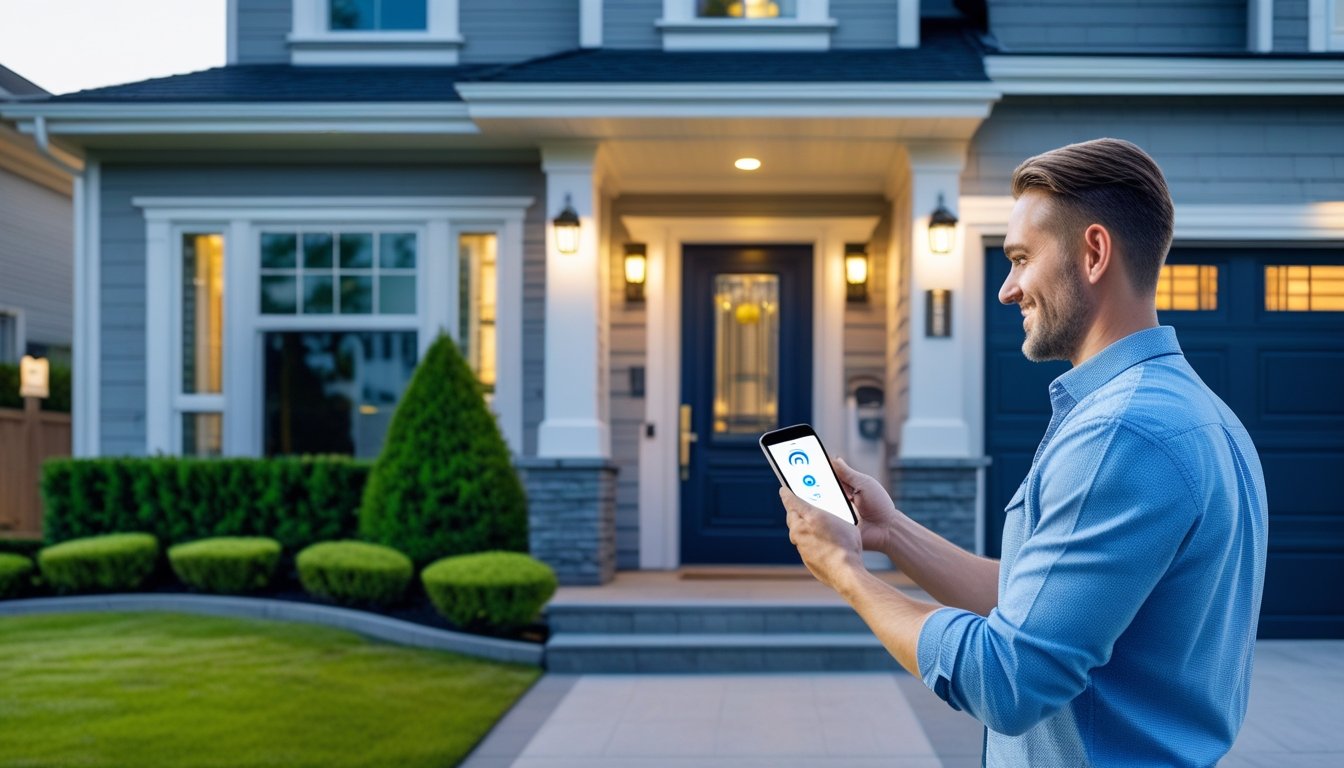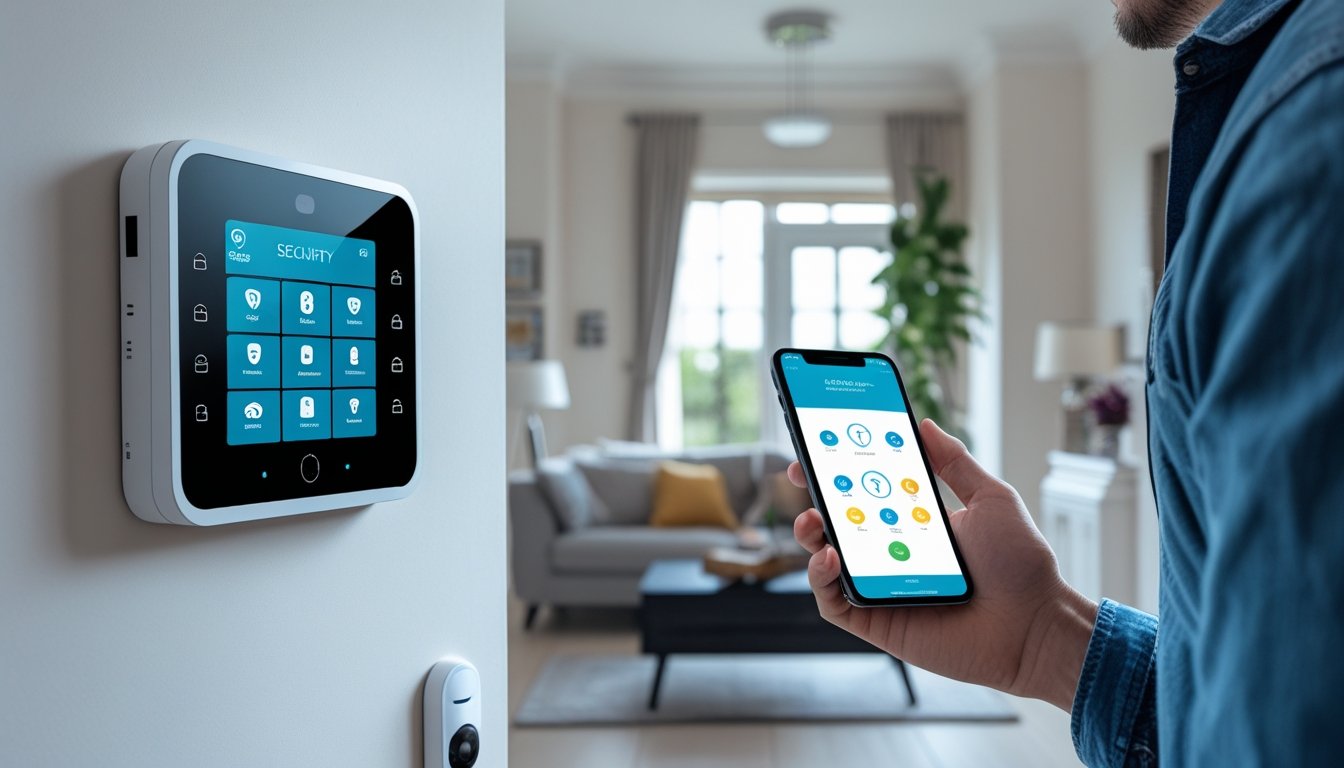Late updated: 02 Jul 2025 10:07
Written by: Elena Prescott
Advanced Home Security Tips For Beginners: Essential Guide to Safeguarding Your Home
In today's ever-evolving world, understanding how to effectively secure our homes is more essential than ever. For beginners, the array of strategies and technologies available can seem overwhelming. Securing doors and windows with deadbolts and reinforcing entry points are fundamental tactics that significantly boost home safety. Our aim is to simplify these advanced security techniques to make it easier for everyone to protect their homes.

Smart home integration offers even more control and visibility. By incorporating smart security systems, we can monitor our home environments remotely and respond quickly to any suspicious activity. This technology not only serves as a deterrent but also provides peace of mind through real-time alerts.
For those just starting on this journey, implementing these measures is a worthwhile investment. As we explore the nuanced aspects of home security, let's delve into the practical tips that can transform a house into a secure sanctuary for us and our families.
Key Takeaways
- Secure key entry points with deadbolts and reinforced locks.
- Integrate smart systems for enhanced monitoring and alerts.
- Embrace advanced tactics to ensure comprehensive home security.
Fundamental Advanced Home Security Measures

Advanced home security begins with robust features to protect your residence. From fortifying doors and using smart locks to implementing comprehensive security systems, these measures are designed to keep your home secure against unauthorised access.
Optimising Door and Window Protection
Doors and windows are primary entry points for intruders. Choosing high-security door locks, such as deadbolts and smart locks with keyless entry, can greatly enhance safety. Smart locks allow us to control access remotely, ideal for managing multiple visitors.
For windows, it's important to equip window locks and sensors that alert us to any tampering. This layer of security can be paired with peepholes or digital door viewers, providing visibility before opening the door. Door sensors offer instant awareness of unexpected entry, enhancing our security response.
Implementing Robust Alarm Systems
A comprehensive alarm system is essential for alerting us and emergency services during breaches. Opt for systems with both professional and self-monitoring features, tailored to our needs. Professional monitoring ensures a rapid response, while self-monitoring allows for real-time notifications via our smart devices.
Ensuring that the system has a battery backup prepares us for power outages, keeping our home security system functional around the clock. DIY security kits are also available for those who want control over their setup without the assistance of installation professionals.
Deterring Intruders With Security Cameras
Visible security cameras serve as a deterrent by making potential intruders think twice. Utilising indoor and outdoor cameras provides comprehensive surveillance, with indoor cameras focused on key areas like entrances. Video doorbell cameras enable us to view and communicate with visitors remotely, adding another layer of security.
For outdoor areas, using wide-angle cameras and remote monitoring applications helps us keep an eye on what's happening around our homes at all times. Leading-edge security cameras often include features like night vision and motion sensors, which are crucial for monitoring during low-light conditions.
Enhancing Outdoor Security
Proper outdoor lighting is a fundamental aspect of security, deterring trespassers by eliminating potential hiding spots. Installing motion-activated lights near entry points and pathways ensures that movement at night triggers illumination, alerting us and discouraging potential intruders.
Furthermore, integrating these lights with our home security system can alert us to any unusual activity. Security signs displayed around the property communicate that we are prepared and well-protected. This psychological barrier, coupled with physical protections, is invaluable for preventing incidents like package theft and advancing our comprehensive home security strategy.
Smart Home Integration and Additional Security Tips
Integrating smart home technology into our security system offers sophisticated solutions for safeguarding our household. By leveraging connected devices, we can enhance security measures and ensure our home is well-protected from various internal and external threats.
Smart Home Security Devices
Incorporating smart security devices is essential these days. Smart locks, cameras, and motion sensors can be easily integrated into existing setups. These gadgets provide remote access, allowing us to monitor our home via smartphones.
Smart plugs and smart bulbs not only offer convenience but also add a security layer by automating lighting schedules. These features create the illusion of occupancy, which can deter potential intruders.
Leveraging the capabilities of home tech, we enhance security by connecting devices through a robust home internet network. This ensures seamless communication between devices for real-time alerts and system updates.
Fire and Environmental Safety Precautions
Beyond security, integrating smoke detectors and carbon monoxide detectors is vital for environmental safety. These detectors can be synced with our smart home system to provide early warnings, potentially saving lives in emergencies.
A fireproof safe offers additional protection for valuable items and important documents. Installing smart sensors that detect abnormal temperature rises can further enhance our home safety measures.
Regular system checks and maintenance ensure our devices function optimally. Keeping software updated is crucial for protecting against vulnerabilities and enhancing device performance.
Community and Lifestyle Strategies
Participating in neighbourhood watch programmes strengthens our home's security through community cooperation. Sharing information and strategies helps us stay informed about potential risks in our area.
Adopting lifestyle strategies such as setting clear routines contributes to home safety. For instance, regular checks on smart devices help maintain their reliability and effectiveness.
By fostering a connected community approach, our collective security is reinforced. Regular communication and collaboration with neighbours create a supportive network, enhancing overall home safety.
Frequently Asked Questions

Effective home security often combines budget-friendly methods with modern technology. Law enforcement agencies recommend tried-and-tested strategies, while integrating personal safety measures can enhance protection. Being aware of overlooked security tips helps maintain a secure environment.
What are the most effective methods to secure your home on a budget?
Budget-friendly home security can be quite effective. We recommend using deadbolts for all doors, securing windows with locks, and reinforcing entry points. Additionally, basic outdoor lighting can deter intruders by eliminating hiding spots. Displaying a security system sign or sticker can also serve as a psychological deterrent, even if no system is in place.
How can I enhance the security of my home using technology?
Embracing technology, we can greatly improve home security. Smart security systems provide real-time alerts and remote monitoring. Using a separate, dedicated Wi-Fi channel for security devices enhances signal reliability. Wi-Fi-enabled cameras allow for easy monitoring, while smart locks offer control over who can enter the home, boosting overall security.
What are the top strategies recommended by law enforcement to protect your residence?
Law enforcement frequently advises homeowners to ensure all entry points are well-lit and visible. They highlight the importance of neighbourly watch programmes, which increase community vigilance. Installing a robust security system that covers critical areas of the property is strongly recommended. Securing garages and sheds is also crucial, as these can be potential targets too.
In what ways can personal security measures be integrated into home safety protocols?
Integrating personal security into home safety involves adopting habits such as regularly checking locks and alarms. We should teach family members emergency protocols and how to operate security systems. Considering personal safety tactics, like carrying a personal alarm, can complement household security measures, especially in larger properties with multiple access points.
What unconventional home security tips might homeowners often overlook?
Homeowners often overlook simple yet unconventional strategies. For example, planting thorny bushes below windows can deter intruders physically. Concealing expensive items from clear view and varying routines can reduce the chances of targeted crimes. Utilising timer switches for lights mimics occupancy, which can be an effective deterrent.
How can residents prevent break-ins and safeguard their property most efficiently?
Preventing break-ins requires a combination of vigilance and technology. We suggest regular reviews of security measures, ensuring all alarm systems are functioning correctly. Being mindful of social media sharing can prevent potential criminals from knowing when the home is vacant. Engaging a professional security assessment can offer insights tailored to specific vulnerabilities.
